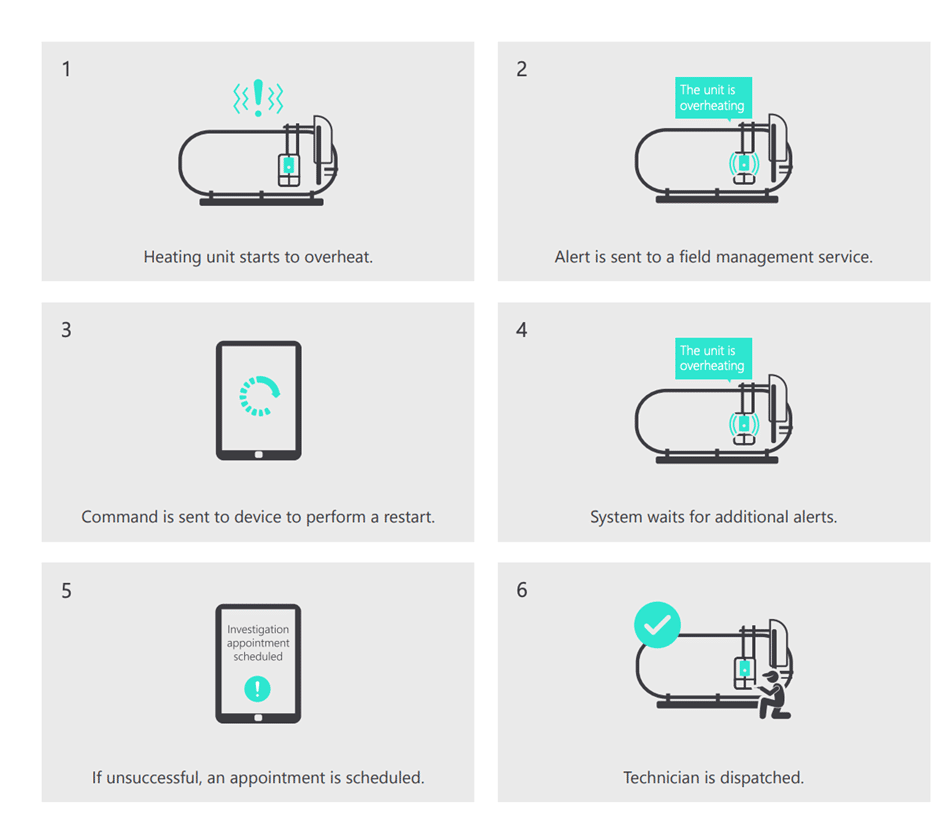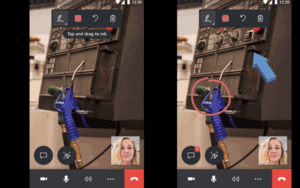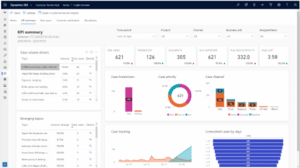Digital Transformation in Field Services
Discover the challenges modern field service orgs face, and how you can use technology to overcome them and capture new opportunities.
Discover the challenges modern field service orgs face, and how you can use technology to overcome them and capture new opportunities.
Table of Content
Modern field service orgs face tremendous pressure to increase efficiency, boost revenue, and keep customers happy amid challenging, rapidly changing conditions. You know, just like everyone else.
Providers must learn to cope with constant disruption and high-speed change by learning to leverage technologies like AI, ML, and big data analytics platforms. Again, just like everyone else.
But – consistently delivering efficient, agile service is harder than it sounds.
Field service operations hinge on getting all of these different variables to work together to produce the right outcome. And, often, it feels like those variables are actively working against you.
Here, we’ll look at the challenges modern field service orgs face, and how you can use technology to overcome them and capture new opportunities.
Field service companies still using legacy apps and manual spreadsheets lack the capabilities they need to handle service requests with the efficiency and accuracy modern customers expect.
To stay competitive in today’s digital landscape, field service orgs must prioritize investments in customer-centric technologies. Think – CRM apps that provide a deeper understanding of customers in context, self-service portals, and remote support.
One of the better-known portals is AAA’s roadside assistance app, which allows its members to call for help when and where they need it. If member plans change, the system automatically updates the service request.
Behind the scenes, the app optimizes each technician’s schedule based on factors like availability and location.
If you’re using D365 Customer Service, you can build and launch your own self-serve portals and virtual assistants to provide 24/7 support. Customers can submit an issue by following a series of automated prompts on their phone.
Service orgs using the connected field service model can take a more proactive approach. Each machine is outfitted with an IoT sensor that transmits data back to the main ERP.
This allows orgs to monitor assets remotely, diagnose and fix problems before there’s a breakdown, and troubleshoot remotely. Essentially, the built-in AI follows a decision tree similar to the one pictured below.

You might also deploy an AI assistant to respond to incoming requests and run diagnostic scans on its own. In many cases, the bot can help customers perform simple fixes on their own.
For more complex problems, it can schedule a repair for the next available time slot. Or, it can escalate the issue to an after-hours technician for an emergency repair.
These days, pretty much every service technician is armed with a smartphone and a handful of apps that keep them connected to clients and colleagues while they’re on the move.
The problem is, these tools tend to be siloed off from the rest of the business.
Modern ERPs like Dynamics 365 connect field service operations with core productivity apps like Teams and Outlook, as well as Power BI dashboards and other real-time data sources. .
That tight integration enables office staff to respond to incoming service requests and coordinate with technicians on-the-fly. D365 Field Service serves up maps and directions, info about service calls and clients, and step-by-step instructions for how to tackle a particular repair.
The mobile app makes it easy for field technicians to manage appointments and immediately start solving problems by highlighting the two or three root causes most likely to be causing the problem.
In-app AI can pull in predictive insights to make just-in-time recommendations, while bots can help techs quickly find information about work orders, customers, or parts.
You might also invest in a remote maintenance solution.
With HoloLens2 and Remote Assist, techs connect with experts to troubleshoot in real-time or follow visual instructions with the holographic computer.

Or, if customers have the headset, techs can guide them through the repair process – no need for a site visit. The latter option has yet to gain traction due to cost constraints among other factors.
Microsoft customer Maribu just completed a successful proof of concept, and is now rolling out a broader initiative to offer remote assistance and training to its customers.
The company sees this investment as a way to not only enhance its maintenance experience, but reduce the costs and carbon footprint of shipping machines back and forth for repair or flying techs out anytime there was a breakdown.
Digital transformation is also unlocking new opportunities for field services orgs to optimize resource management.
When all data, workflows, and operations live in one place, service orgs can improve everything from scheduling and dispatching to customer engagement and asset management.
In-house support staff can optimize service outcomes by following the data.
Borrowing an example from the D365 guided tour, a service manager might navigate to her KPI dashboard to ID improvement opportunities and any time-sensitive issues that require her to take action.
Say she notices that a disproportionate number of recent cases are related to loose brew valves.

She might then head over to Teams to gather more info from technicians re: what’s going on with the brew valves. If it turns out the instructions for this repair are unclear, she can ask the content team to add images and enhanced steps to produce a better outcome.
As you capture more data, you can tap into more advanced optimizations like automated dispatching and route optimization.
Digital twins, for example, can help service techs work through complex problems remotely, without the time and expense of an additional visit or bring new hires up to speed.
IoT-enabled assets and inventory can automatically alert techs when a repair is needed, and provide an accurate ETA based on when parts will be in stock.
Whether we’re talking about HVAC, plumbing, or IT services, field services is a uniquely challenging space for several reasons – silos, mobility issues, emergency service calls, and so on.
Digital transformation gives service providers an opportunity to fundamentally change how they run their business – allowing them to maximize the value of critical resources and serve customers with the accuracy and speed they expect.
Velosio’s Field Service experts know exactly how to transform service operations – whether that’s in the call center, on-site with clients, or within the backend systems that keep things running smoothly.
Get in touch to find how Velosio helps field service orgs optimize, automate, and transform their entire business.